How do you think about your content? If you’re at all like me, you probably think about it in a pretty short-term way. You write something, you publish it, it gets some attention, and then… you forget about it. On to the next thing. And you probably assume that the rest of the world thinks the same way — not about their content, but about yours — right? After all, social media and search engines definitely prioritize recency. But the data tell a different story. And if you’re paying attention to that story, hopefully you’ll let it change how you think about your content. I certainly have. In fact, now I think about content just like I think about money. Let me explain.
Every dollar is an employee. The question is, it it working for you, or for someone else? That’s not my wisdom, by the way, that’s the savings and investment philosophy of a guy who calls himself Mr. Money Mustache. He writes:
“…[Keep your] money as active as possible. Every dollar is actually a little employee that will work for you, 24 hours a day, for as long as you keep it. But you don’t want your employees hanging around eating donuts in the smoking lounge of your zero-interest checking account. [Put] these green paper employees to [work] wherever they will work hardest for you…”
…As in, a place where they either earn interest for you or keep you from paying interest. No brainer, right? Yeah, except the vast majority of people don’t do this.
So, with that idea in mind, let’s go back to content. Every article you write is actually a little employee that will work for you, 24 hours a day, for as long as it’s published. Long after you’ve forgotten about it, Google will continue to refer many, many strangers to this tireless employee, and what that means is that — over time — this employee will talk to more people about your business than you ever could on your own.
Earlier, I said the data prove this. Let me show you.
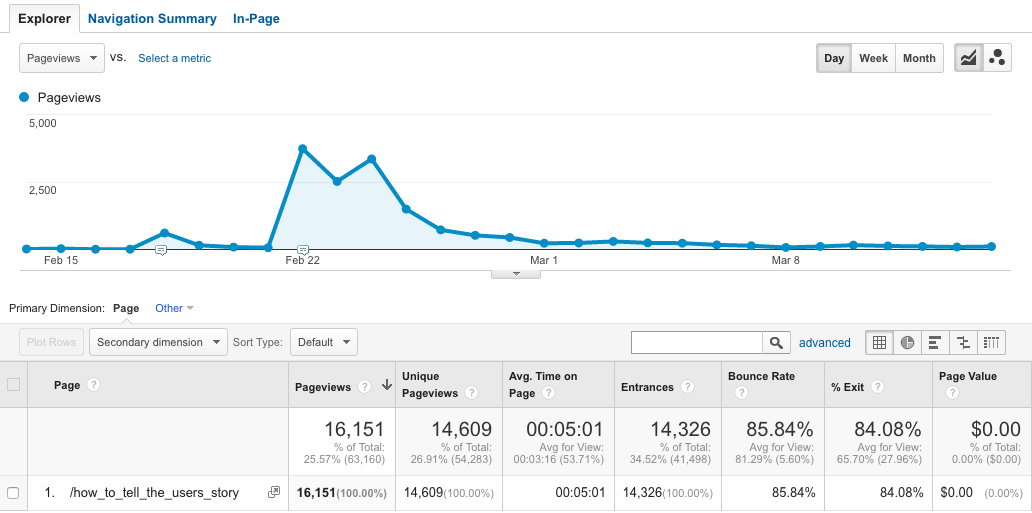
A couple of years ago, I wrote an article about doing user research. In the first month, that article got a lot of attention. You can see from the analytics screengrab above that it brought almost 14,000 first-time visitors to our website. Pretty cool. How’d that happen? Well, we sent it to our subscriber list about a week after first publishing it, and then it started making the rounds on social media. That made for a few days in a row where we saw anywhere from 3-5,000 visitors come in through this article each day. That was all very exciting.
Then we forgot about it.
But look below. Three months in, 2,000 more first-time visitors were introduced to our firm by this “employee.”
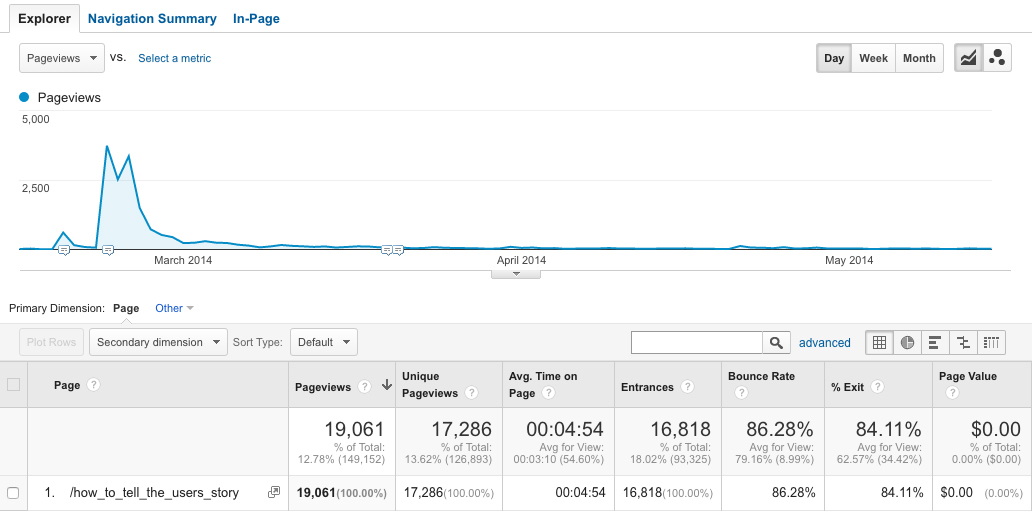
A year after I wrote that article (see below), it brought almost 20,000 first-time visitors to our site.
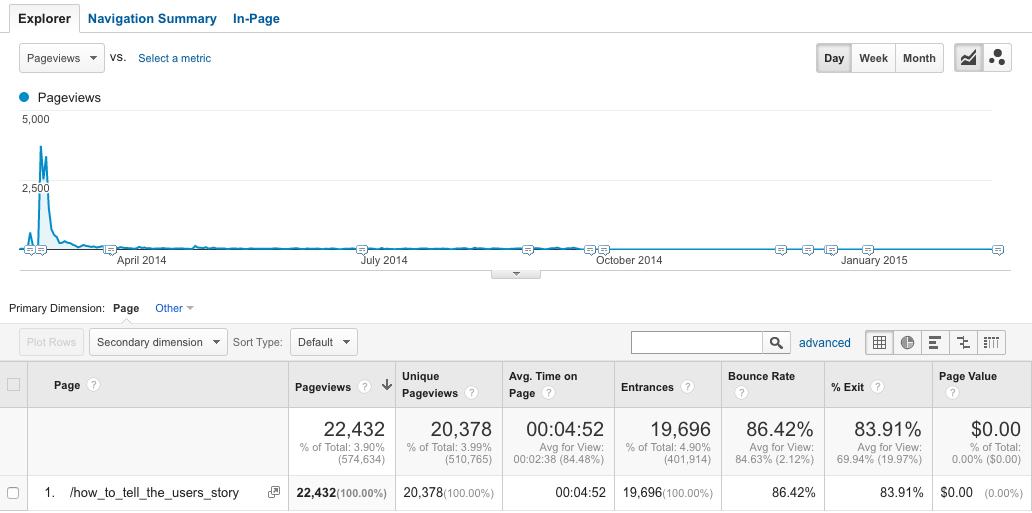
And as of today (see below), almost two-and-a-half years later, the number of first-time visitors has grown to almost 60,000.
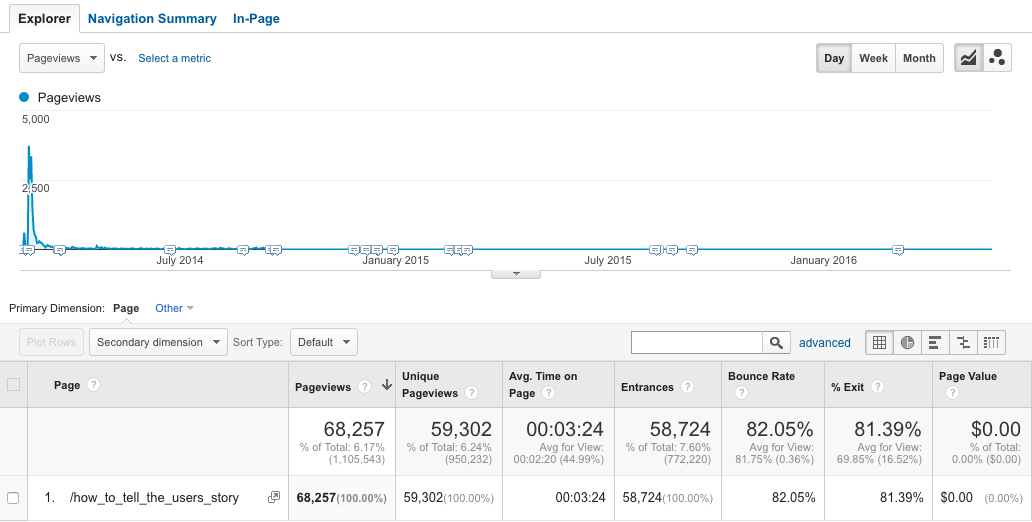
Every article you write is actually a little employee that will work for you, 24 hours a day, for as long as it’s published.
And yes, for a piece of content like this, the bounce rate is always going to be high. It’s related to our expertise, but it’s about a subject that many more people than are likely to hire us are curious about. But still, almost 60,000 people have given Newfangled an average of 3 and a half minutes of their time, and almost 20% of them (~12,000) have gone deeper into the site and given much more of their time.
That’s profound. And that’s just one page of thousands. All of them working for us, 24-hours a day for years.
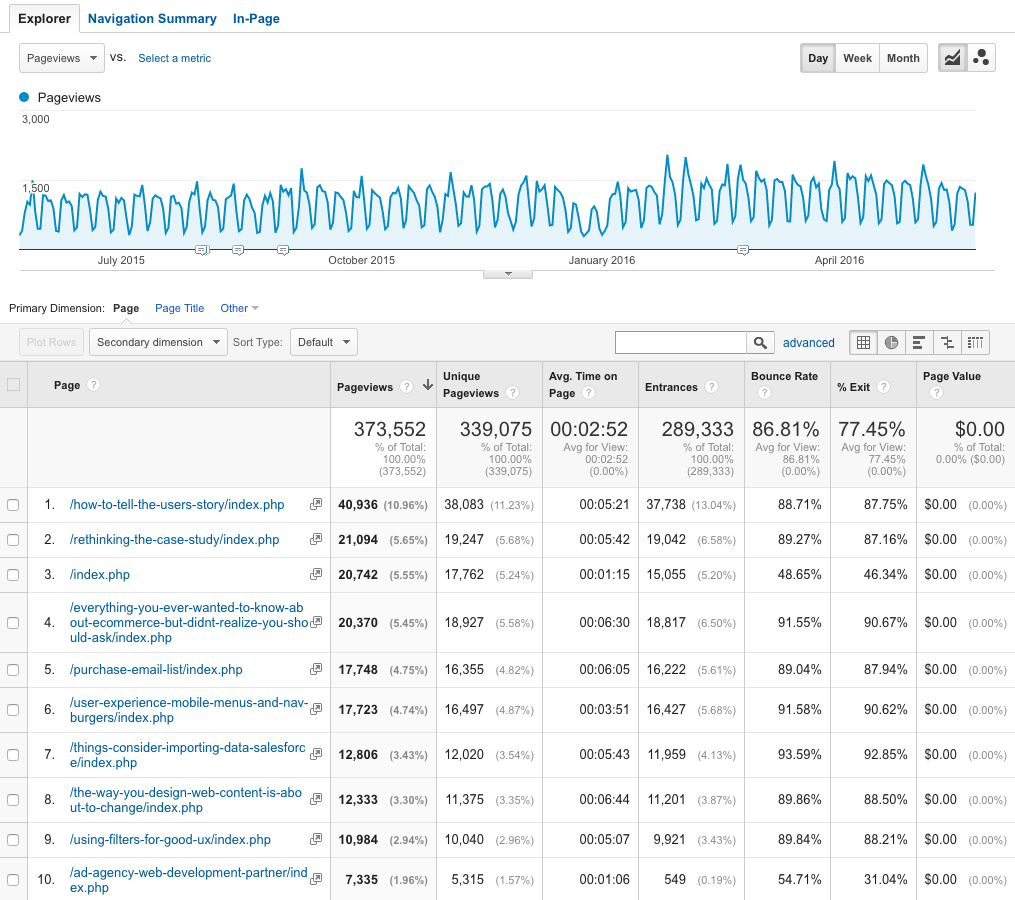
I’ve heard Lauren Siler, our Director of Marketing, say to many clients that they should set a goal of having the majority of the top ten visited pages on their site be this kind of content — expertise-driven content that attracts, informs, and engages prospects. For us, over the last two-and-a-half years since I published this one article I’ve been talking about, 8 of our top 10 pages are articles (see above). In fact, the top two pages on our site over the last two-and-a-half years have brought in almost four times as many first time visitors as our homepage!
Those are some good employees!
